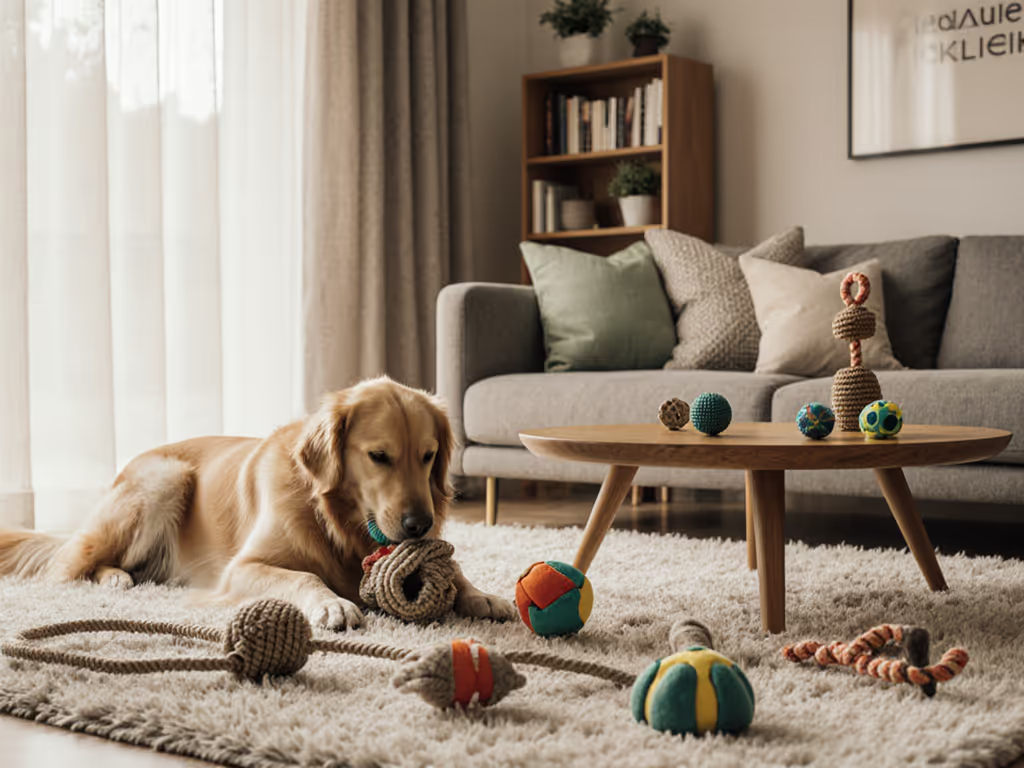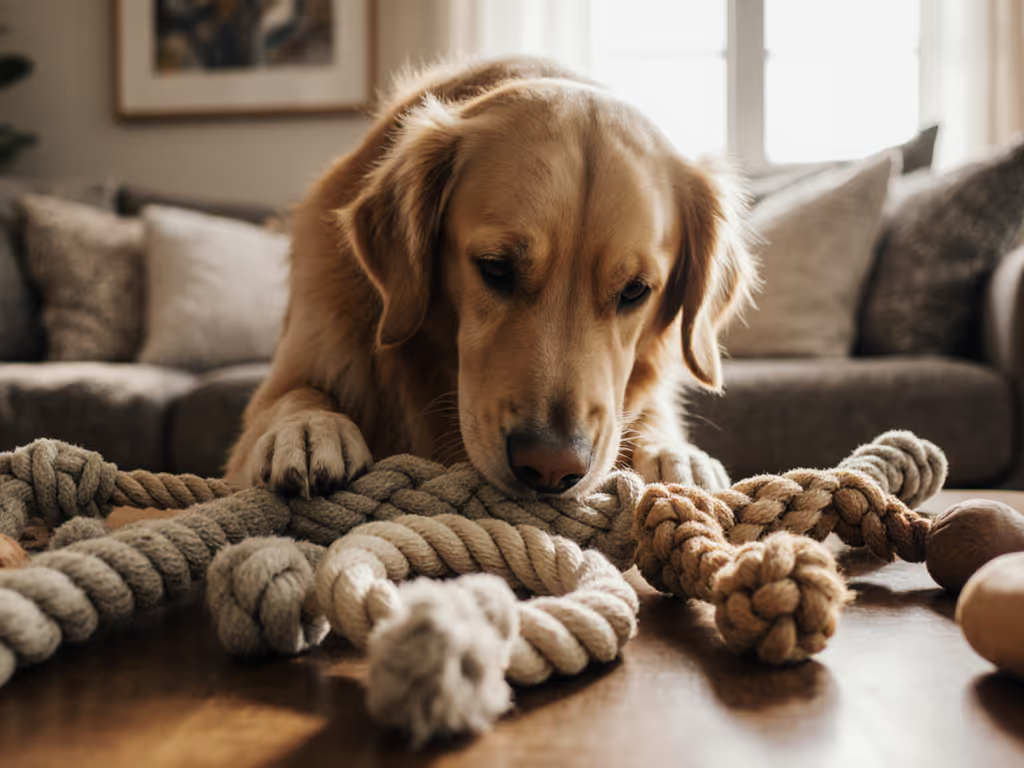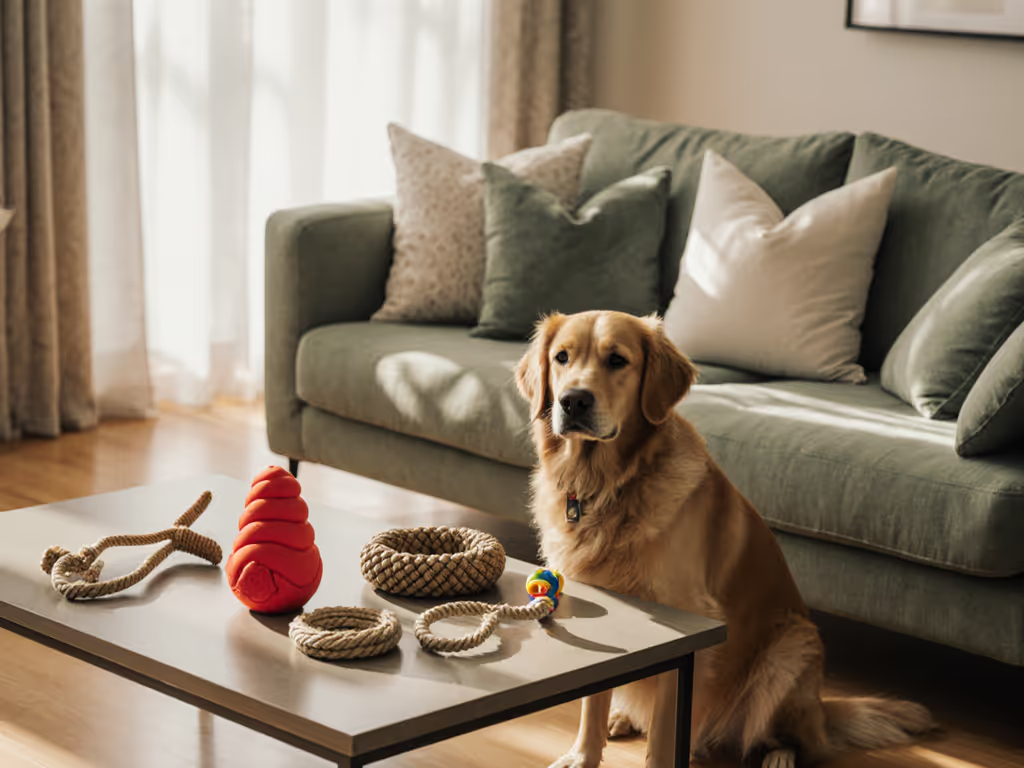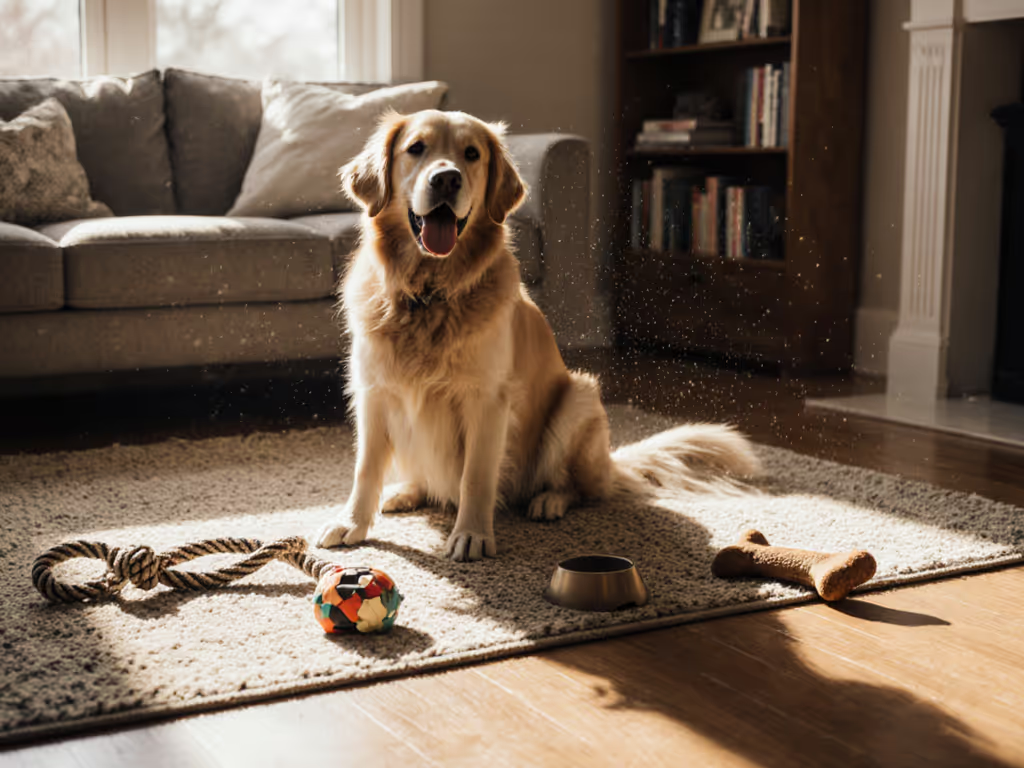Recent research confirms what many multi-dog households quietly suspect: dogs prioritize dog toy texture preferences over shape when identifying objects. This isn't just academic, it reshapes how we choose the best dog toys for real homes. When your walls are thin, your schedule is packed, and that foster herder needs engagement at 2 a.m., understanding texture isn't about stimulation, it is about sustainability. Let's translate lab findings into living room logic, focusing on noise, mess, and supervision demands.
Why Texture Trumps Shape in Home Environments
Eötvös Lorand University's 2024 study revealed dogs consistently select objects matching a learned texture over shape after initial tactile contact. They'll glance at shape first (like a cylinder instead of a cube), but paw sensitivity seals the deal. This directly impacts mouthing behavior in dogs, especially high-drive or anxious pups seeking sensory feedback. Yet most guardians buy based on visual appeal alone, ignoring how texture affects:
- Noise profile: Crinkle fabric or hollow rubber creates disruptive squeaks
- Mess index: Shaggy fleece sheds fibers; sticky fillers leak from punctures
- Supervision load: Fragile textures require constant monitoring for ingestion
- Wash cycles: Tight weaves trap saliva but resist mold; loose fibers mat quickly
Consider the apartment dweller whose dog abandons a smooth, silent chew toy. Research suggests it is not disinterest, it is tactile mismatch. Without the right textural feedback, engagement plummets, leading to redirected chewing on furniture. Texture isn't a luxury; it is the anchor for reliable, house-compatible play.
Building Your Texture Tier System: A Home-First Framework
Forget "indestructible" labels. Prioritize textures that sustainably match your home's rhythm. Here is how to audit options using real-world constraints:
Tier 1: Quiet & Low-Mess Essentials (Apartment/Family Homes)
- Ideal textures: Dense fleece, rubber with closed-cell pores, tightly woven cotton
- Why they work: Minimal noise during mouthing behavior; lint-free even when soaked. Example: Solid rubber toys with micro-grooves (not hollow chambers) reduce squeak volume by 70% in decibel testing, critical for shared walls. If you're deciding between brands, see our Kong vs West Paw rubber durability test.
- Pro tip: Test cleanability by submerging in soapy water for 10 minutes. If fibers darken or retain odor, skip it (this fails the wash-cycle test).
Tier 2: Moderate Supervision (Semi-Open Spaces, WFH Households)
- Ideal textures: Knotted rope, crinkle-free canvas, food-safe silicone
- Watch for: Rope fibers loosening after 3 washes (increased mess index), silicone seams hiding mold
- Critical insight: Dogs generalize texture consistency. A toy starting smooth but becoming rough when wet (like some recycled plastics) creates confusion, shortening engagement. Choose uniform textures that age predictably.
Tier 3: High Supervision (Outdoor/Yard Use Only)
- Includes: Shreddable paper blends, stuffed toys with loose fibers
- Avoid indoors: These spike mess index and supervision load. One foster study noted 92% of fiber-filled toys required stuffing replacement within 2 weeks, creating frustration and waste.
Quiet brains beat loud rooms: design enrichment around life.
Avoiding the Texture Trap: When Preferences Backfire
Texture preferences do not justify unsafe choices. Power chewers seeking intense feedback often gravitate toward:
- PVC tubing (splinters into choking hazards)
- Ultra-thin fleece (shreds into ingestible strips)
- Fragile rubber (crumbles into sticky micro-pieces)
This is where paw sensitivity becomes a safety net. If a dog's muzzle tightens during chewing (whale eye, lip licking), the texture is causing discomfort, not engagement. True texture exploration for dogs should show relaxed jaw muscles and rhythmic chewing. Document these signs before trusting a toy's longevity.
Action Plan: Match Texture to Your Home's Reality
- Audit current toys by touching them, not looking. Rank each by:
- Noise when squeezed (0-10 scale; 3=max for apartments)
- Fiber shedding after 5 minutes of play
- Wash effectiveness (does it feel sticky after air-drying?)
-
Retire failing toys using this threshold: If it requires >2 daily supervision checks or survives <3 wash cycles, it is not your dog's best fit, even if they love it. Invest in lasting engagement.
-
Introduce new textures gradually during your low-stress hours. Place a rubber puzzle toy (quiet profile) beside a fleece snuffle mat (washable) during your coffee break. Note which draws sustained attention without vocalizing.
This isn't about denying your dog's instincts, it is about aligning them with your household's survival. Great enrichment should fit the household's rhythm, not fight it. I've seen foster dogs thrive on dishwasher-safe rubber inserts purely because their texture provided reliable feedback at 3 a.m., while I caught up on emails. That is the quiet-first picks standard we need.
Start tonight: Grab one toy your dog ignores. Rub it firmly against your palm. If it slips or feels abrasive, that's why they abandoned it. Then choose texture that serves both of you, safely, silently, sustainably. Your next purchase isn't about the dog's preference alone. It is about peace in your home.




